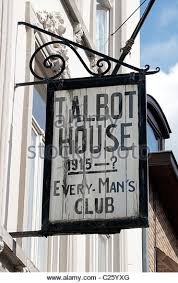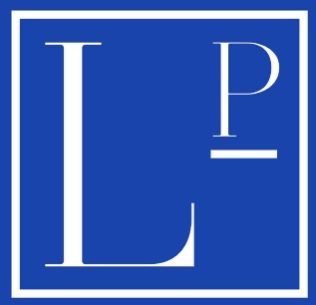This wonderful fellowship’: The work of Talbot House and the Toc H movement with the British and Imperial armies in two world wars

‘This wonderful fellowship’:
‘This wonderful fellowship’: The work of Talbot House and the Toc H movement with the British and Imperial armies in two world wars. Toc H is a movement, still existing today, which had its roots in the battlefields of the Great War.
Talbot House, in Poperinghe
Talbot House, in Poperinghe, Flanders, had been set up by a chaplain, the Revd P.B. ‘Tubby’ Clayton at the end of 1915 as a rest house for troops just behind the line. It became a unique institution, referred to by the men by its signaller’s symbols, Toc H. At Talbot House troops could meet and “forget the war” relaxing in the garden and rooms, writing letters and engaging in debates and games.
The foundation members
These were to be the “foundation members” of an organisation that was crystallising in his mind to perpetuate the work and ethos of Talbot House. The ethos of the movement was encapsulated in the “Four Points” of the “Toc H compass: “FELLOWSHIP – to love widely, SERVICE – to build bravely FAIRMINDENESS – to think fairly, THE KINGDOM OF GOD – to witness humbly,” and was called Toc H after the signallers wartime parlance for Talbot House.
Connection with the Dominions
The Second World War
Plans in wartime
On September 26th 1939 Lord Halifax wrote to The Times in his capacity as one of the Vice Presidents of Toc H on the subject of the task of Toc H members in war time. He explained that Toc H could stand for “To conquer hate” and that he regarded the “varied work that Toc H had been possible training for what it is now undertaking.” He described how Toc H was making “Its full contribution of men to the fighting services and all forms of civil defence.” He continued “Besides direct national service, Toc H is discovering and using a great many opportunities to serve the men of the Navy and Army and Air Force, the civil defence workers, the evacuated population, and indeed anyone in need of friendship. Its twenty-five houses and numerous local meeting places in this country and overseas are providing premises for such work and its available membership is being mobilised to carry it on.” Within four months of the outbreak of war 142 clubs and centres had been opened for troops and another for forty-three civil defence workers and evacuees. The annual report of 1940 described how in over two hundred places Toc H units had opened or were largely responsible for running, service clubs. A war services committee had been sent up and was appealing for funds to carry out the war work of the movement. Fifty thousand pounds was required.
Talbot House invaded
Lt Arthur Denver described his experiences at Poperinghe in August 1939. Describing the last hours of the Old House. He was visiting the house as part of a training course ran by Paul Slessor to become ‘honorary wardens’. He remembered the week: “Beautiful weather and everything perfectly peaceful. taking tea in the garden in the sunshine gave no hint of war imminent. I firmly believed at that time that man could not be so foolish as to kill and desecrate again.” On 24th August he received a message from Paul Slessor asking him to come back to London immediately and later in the day another one came commanding him to return to his regiment amid an atmosphere of mounting tension in the house and the town, he took light and joined in prayer in the Upper Room. He then wrote in the warden’s log and caught a train to Dunkirk. (exactly five years and one month later on Sept 28th 1944 he was back in Poperinghe and spoke to Olida Berat who assured him that the lamp was safe.) Early in 1940 a group of Toc H members went with the British Expeditionary Force to set up service clubs in Belgium and France. Lt Col Bonham- Carter, Rex Calkin, general secretary, H.R Pilcher, R.H. Stanton and the Revd Austen Williams set out and established clubs at Lille, Douai and Rouen, with the intention of opining Talbot House again. However, the swift progress of the German army meant that the houses at Lille and Rouen had to be evacuated. On May 21st these five “after serving the retreating troops and evacuees too long for their own safety,” left the house at Lille, making for Rouen and were captured, becoming prisoners of war.
Around the world
In November a house was open in Reykjavik, Iceland under the leadership of Geoffrey Johnson and Alec Churcher, and shortly after Padre Owen Williams was put in charge of a club in Alexandria. These were followed early in 1941 by two new houses in Malta and a houses in Cairo and Alexandria . However, Harrington house in Gibraltar was destroyed by enemy action in September of 1940. A leave camp in Burma, Elephant Point, was particularly appreciated by troops who could not go home on leave from the eastern battlefields. The growth of Toc H clubs and house, in Britain and abroad was funded by the income from the clubs and by annual radio appeal which brought in £10,000 a year. Ken Prideaux Brune wrote: “Its work was widely known and appreciated and raising money for it was not a problem.” When World War II broke out Toc H in Australia found a new focus. In 1940 A Club for Servicemen was opened in Sydney. It opened Services Clubs in Perth, Adelaide, Melbourne, Sydney, Brisbane, and in North Queensland in Townsville and Cairns. Mrs Eleanor Roosevelt, the wife of the President of the United States of America, visited the Services Club in Townsville in 1943 to thank everyone there for all they were doing for American Servicemen. The club in Cairns was called Talbot House. It was situated across the road from the railway station and today is the Grand Hotel. These Clubs filled a real need for many thousands of members of the armed forces making their way to and from the theatres of war. They provided accommodation, including meals, and in each there were facilities for reading, writing letters home or simply relaxing. There was a Club in Port Moresby in New Guinea and there were fourteen Toc H Branches in Changi Prisoner of War Camp. In 1947 Toc H hosted the first Midnight Service on ANZAC Eve at the Shrine of Remembrance in Brisbane.When Tubby sailed to Suez in January 1944 he visited the local Toc H members and leaders. Despite the rapidly fluctuating and moving troop movements the average attendance at meetings was fifty men . Shortly after this he attended a Toc H meeting on Tehran. Throughput the war in Malta three Toc H houses were kept in operation. The permanent staff on staff on several troops ships formed Toc H branches . A report in 1943 spoke of a branch started in a dried up well. Censorship prevented a revelation of this location but the editor hazarded a guess it was in Libya. There were houses in Tel a Viv and Jerusalem . A worker in the house at Tel a Viv reported “There seems no end to the groups , circles , wings, call them what you will which have sprung up in the name of Toc H all over the middle East . Wherever Toc H members find themselves they have kept alive a desire to meet together, bring in their pals and keep alive the fellowship .” In the official services guide to Cairo , Talbot House in Cairo was described : “Talbot House , Toc H , seeks to provide an opportunity for a period of quiet home life for those who use its facilities. Lounges, reading and writing rooms, dining Hall, chapel and a hostel of 65 beds are continuously open. Toc H meetings for members, their guests and friends are held every Tuesday evening at 8.30 p.m. Tariff: Bed and Breakfast 15 piastres, Lunch and Dinner 10 piastres, Afternoon Tea 4 piastres.
POW
The original five Toc H members that had been taken prisoner in 1940 at Talbot house were added to as the war went on, By January 1942 there were 143 of them, 70 concentrated on Oflag vi b at Werburg . Toc H groups were formed in many POW camps in Germany and Italy , and men recruited and Toc H principle applied to making Life in the camps more bearable to all. The news of theses captive Toc H groups formed an article in most of the wartime Toc H journals.
Back in France
In July 1944 Lt F.W. Morgan wrote to his father describing the activities of Toc H in France after the success of D day, and the efforts of Toc H members to create a canteen and rest and chapel .The group had weekly meetings. In a comment which augured well for the post war health of the movement he explained: “ are all very keen, there must be thousands of these fellows in the services now and it looks as if the movement will rapidly increase its members and strength when this wretched war is, at last , over. This letter was included in the September Toc H Journal under the heading “Toc H is back in France.” A report entitled ‘Back to the Old House’ had good news for the readers of the Toc H Journal : “Listeners to the midnight BBC news on September 7th 1944 heard Frank Gillard journalist and a Toc H member, announce that he had just visited Poperinghe and found the house intact.” In the journal a more detailed letter from Frank Gillard was quoted: “You will remember saying, when we met in London last May that I stood a very good chance of being the first member to return to that Old House. Yesterday the prophecy came true.” The November Journal reported that the house was not only open but used: “by our own men of the British Liberation Army. An R AF regiment had helped with the initial clean-up. They had managed to restore the chapel to a semblance of sanctity.” Kenneth Prideaux Brune assessed the contribution of Toc H in the Second World War: “The contribution of this small charity during the Second World War is a remarkable story. At no other period of its history was Toc H so well known or so widely supported.” The Toc H movement has links with veteran’s organisations and has been prominent in helping with remembrance throughout the 20th and into the 21st century. On Sunday 11 November 2018, 16 Toc H members marched at the Cenotaph in London and remembered both past members in the armed services and the service Toc H gave to others from all over the world in the First and Second World Wars .
